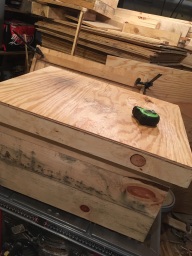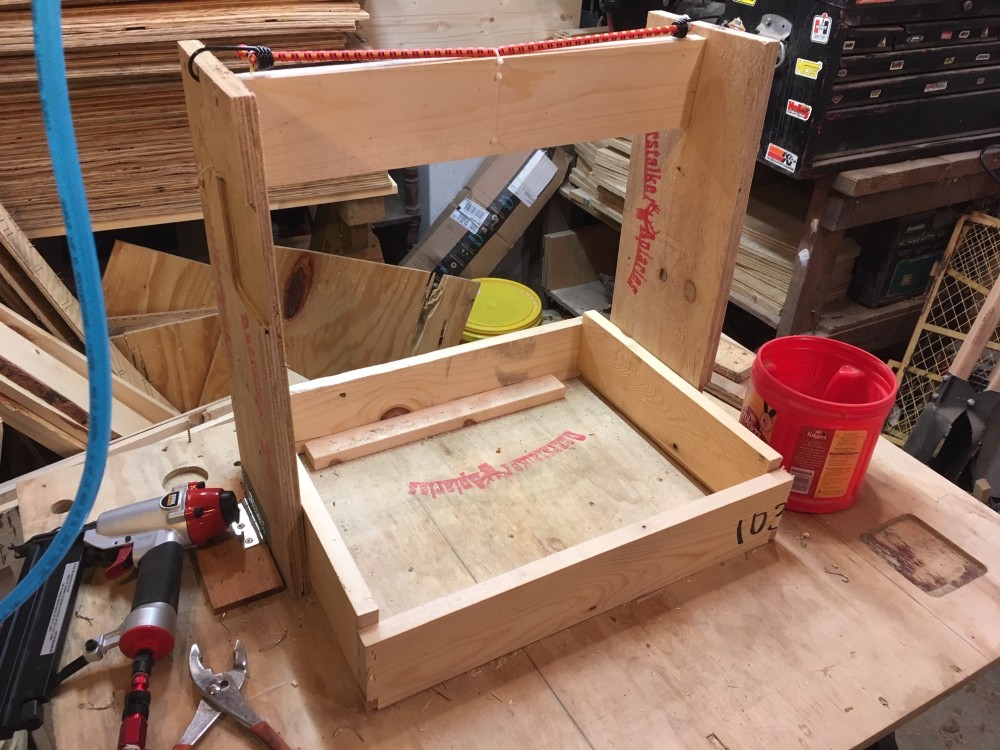https://honeyhomestead.blog/2019/11/18/gumbo-recipe-no-grease-no-slime/
In 2006 I bought 50 beehives. Life happened and I was forced to abandon the project. In March 2015 I began again with the 3 surviving hives................................................................................................ I have moved my blog to a new site at: https://honeyhomestead.blog/
Tuesday, November 19, 2019
Wednesday, November 13, 2019
Wednesday, October 23, 2019
Wednesday, October 16, 2019
Monday, October 7, 2019
Tuesday, August 13, 2019
Tuesday, July 30, 2019
Monday, July 22, 2019
Tuesday, July 16, 2019
Friday, July 12, 2019
Friday, July 5, 2019
Tuesday, July 2, 2019
Monday, April 1, 2019
Surprising Photos Reveal Beautiful Larva in Royal Jelly
Labels:
Apiology,
bee,
bee hives,
bees,
beetles,
Farm and Ranch Living,
Hive,
Hive beetles,
hives,
Splits
Tuesday, March 26, 2019
Thursday, March 21, 2019
Monday, March 4, 2019
Thursday, February 28, 2019
Monday, January 28, 2019
Monday, January 14, 2019
Building Beehives – Time is Money
Beehives beg to be built from scarp lumber. With the outside dimensions of 16-1/4 x 19-7/8, even seemingly useless construction scarps can be used.
This year, I plan to make a Vlog series on how to start
beekeeping for zero dollars.
I have built hives from old pallets. When people hear that,
they immediately start posting comments about chemicals in pallet wood. Well I
have built about 12 hives from pallets and they are all doing fine. I simply
made sure that the pallets were clean and unpainted.
However, if you have ever tried to disassemble a pallet, you
know that it is a time sucking, board breaking, pain in the ass! So if it is in
the budget, it is much easier to just buy lumber.
In a previous blog, I showed how deep supers can be built
from 1x4’s. However even with that, I estimate that the lumber for 63 hives
(top, bottom, one super, and ten frames) will cost $851.61.
Why 63? When trying to figure out how to cut the wood with
the least amount of waste, 63 was the magic number.
Similarly, I estimate 63 supers with ten wood frames each would
cost $592.00. These are of course only estimates and the actual cost so far
seems to be around 120% of that number.
My goal for 2019
is to make 100 hives with two deep supers each. I already have enough equipment
for 25 hives (17 of those have bees already). That leaves 75 hives. Even conservatively
speaking that comes out to $1718.58 worth of lumber. Ouch!
I produced enough honey in 2018 to cover that cost but I’m
cheap and I’d rather keep some of that money for other projects.
So when I came across (18) 6’x2’x2’ crates made out of
quality yellow pine 1x4’s and ¼” plywood… well the cheapskate in me couldn’t
pass it up.
I spent seven hours yesterday, with the help of my nephew
Zane, disassembling the crates. Pulling the boards apart was easy but removing
the wood staples from the plywood was monotonous to say the least. Over the
course of seven hours I removed 2160 staples. I still have six more crates left
to do but I already have over 400 board feet of 1x4’s ($250 value) and 32 2’x4’
sheets of plywood ($175 value).
Once I have disassembled the remaining crates, I will have saved nearly $700. That
makes my time (and Zane’s) worth $66.67
an hour.
“A penny saved is a
penny earned” – Ben Franklin
One last note on my nephew, Zane. That 13-yo kid produced as
much work as any adult could have. I started working 2 hours before he arrived
and disassembled 2 crates but once he was there, we were able to do 2 crates an
hour – cutting my work in half. He did all of this for free but in the end I
gave him $20 as a humble way of saying thanks. I couldn’t be more proud of that
kid.
Location:
Indianola, MS 38751, USA
Monday, January 7, 2019
Lessons learned harvesting my first goose.
I didn’t mean to name the geese but, like an earwig that burrows into your brain, the name Bruce the Goose was named in my mind, even if I didn’t say it out loud. I later named the other goose, Bradshaw after Nick “Goose” Bradshaw from Top Gun.
I invited my son-n-law, Noah and my nephew, Zane (13) over to
help. Noah Brought his brother Ethan and Zane brought his friend (whose name
escapes me).
The first thing I did was to catch
Bradshaw and place him in a cage inside the house. I didn’t want him to watch.
Then we caught Bruce and placed him
in an old duffel bag like I had read on Homesteadingguide.com.
This turned out to be excellent advice. It calmed Bruce down and helped to make
the whole harvest more relaxing.
As I mentioned in an early blog, I
had bought a 16.5” meat clever to do the deed with. I made sure it was razor
sharp. We also made a chopping block out of six scrap 4x4’s and placed it on a
saw horse.
I had intended on placing a string
around the birds neck but decided not to because I was worried it might stress
it out. I should have used the string.
Once everyone was ready, I gave Zane
the camera and had him record it. Since I couldn’t find an instructional video
- I will use the footage to make an instructional video later this year.
With Ethan holding the bag, I
unzipped it just enough to allow Bruce to peak out.
I removed my hat – it just felt
like I should.
Then Bruce, of his own accord, laid
his head out across the block (see the picture). That’s when I did it.
The chop severed Bruce’s spine but
I left about a quarter of his neck intact. Blood sprayed out and we let the bag
fall to the ground.
With his spine severed, I know Bruce
wasn’t in pain but it took about a minute for him to stop moving. In the video,
you can hear a sad death grown about five or six times – I didn’t notice the
sound in real time.
 I had been very stressed about
killing the bird but when it was over, I felt completely normal. I realized
that Bruce was no different than the other birds I had bought from the store over
the years – I was just more involved this time.
I had been very stressed about
killing the bird but when it was over, I felt completely normal. I realized
that Bruce was no different than the other birds I had bought from the store over
the years – I was just more involved this time.
“I’m not afraid of death; I just don’t want to be there when it
happens.” – Woody Allen
So what did I learn?
- The duffel bag is a great way to kill a goose. It calmed the goose down and it calmed me down.
- Use a string! If I had tied a string on Bruce’s neck, then I wouldn’t have rushed my chop and I would have cut his head clear off.
- Cutting the head off removes just as much blood as slicing the throat. Countless videos said that if you cut the head off, the heart would stop pumping out the blood. This was not the case with Bruce. The blood sprayed out and when I cleaned him, there was almost zero blood inside of him.
- Fatten up the goose. I wanted Bruce’s last days to be as happy as possible but allowing him to free range kept him from putting on any weight. Bruce was the skinniest bird I have ever cooked. In fact, he was barely an appetizer.
- Get a young goose. Not that I had the option, as geese are really hard to find. But Bruce was older and his meat was so tough that I LITERALLY broke a sweat carving him on Christmas.
All and all, this was a good
experience and I will definitely harvest more birds in the future. I’m not sure
I will harvest a Christmas goose again but only because I made a turducken from
scratch that came out much better (so that may be our new Christmas tradition).
Lastly, this is my first blog of
2019. Since I got so much traffic last year, I have moved to WordPress. I will continue
to post the same blog on both Honeyhomestead.blog and
Thebunglingbeekeeper.blogspot.com for now. However, I encourage you all to
become followers on the honeyhomestead.blog site.
Location:
Indianola, MS 38751, USA
Subscribe to:
Posts (Atom)

























